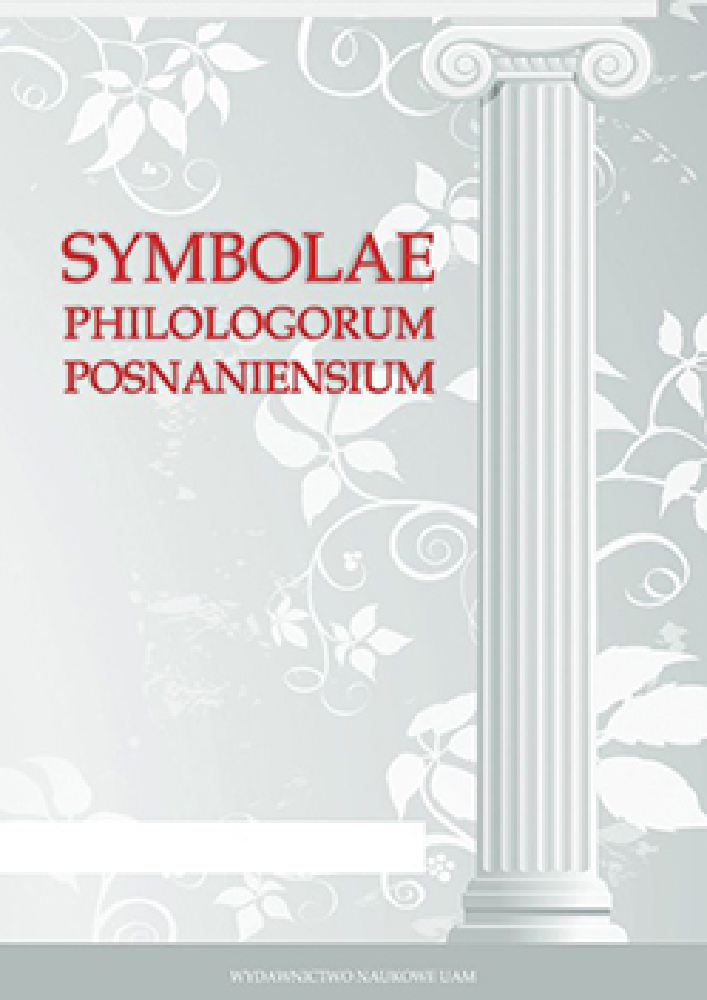Abstrakt
In the Ethiopian adventures of Theagenes and the Chariclea by Heliodorus, Seres are mentioned twice as allies of the Ethiopian king in the battle against the Persians (9, 16–18) and participants in the royal audience at Meroe (10, 25–26). They donate silk produced in their country to the King Hydaspes, so they are usually considered Chinese by commentators. However, the world presented in Heliodorus’ novel is set in the realities of the Roman era and Roman eastern trade, when African countries also participated in trans-oceanic contacts with India. The archetype of the Heliodorus’ Seres can be found in the kingdom of Chera, located in southern India.
Bibliografia
Źródła, przekłady, komentarze
Heliodor, Opowieść etiopska o Theagenesie i Chariklei, przekł., wstęp i przyp. S. Dworacki, Poznań 2000.
Opracowania
Carter 1955: T.F. Carter, The Invention of Printing in China and its Spread Westward, 2nd ed. revised by L. Carrington Goodrich, New York 1955.
Charles, Singleton 2019: M.B. Charles, M. Singleton, Implications for our Understanding of Elephants, Meroë and its Interaction with Ptolemaic Egypt, Ancient Society 49 (2019), 207–229.
Dworacki 2009: S. Dworacki, Peculiarities of the non-Greek world in Heliodorus’ Aethiopica, „Symbolae Philologorum Posnaniensium Graecae et Latinae” 19 (2009), 135–141.
Futre Pinheiro 2014: M.P. Futre Pinheiro, Heliodorus, the Ethiopian Story, w: A Companion to the Ancient Novels. ed. Edmund P. Cueva and Shannon N. Byrne, Wiley-Blackwell 2014, 76–94.
Good 1995: I. Good, On the Question of Silk in Pre-Han Eurasia, „Antiquity” 69 (1995), 959–968.
Lubec, Holaubek et alii 1933: G. Lubec, J. Holaubek, C. Feldl, B. Lubec, E. Strouhal, Use of silk in ancient Egypt, „Nature” 362/4 (1993), 25.
Malinowski 2012: G. Malinowski, Origin of the name Seres, w: Serica – Da Qin: Studies in Archaeology, Philology and History on Sino-Western Relations: (Selected Problems), eds. G. Malinowski, A. Paroń, B.Sz. Szmoniewski, Wrocław 2012, 13–25.
Sánchez Hernández 2018: J.P. Sánchez Hernández, Merchant’s Road Toward the Utopia in Heliodorus’Aethiopica, „Antichthon” 52 (2018), 143–160.
Schneider 2015: P. Schneider, The So-called Confusion between India and Ethiopia: The Eastern and Southern Edges of the Inhabited World from the Greco-Roman Perspective, w: Brill’s Companion to Ancient Geography. The Inhabited World in Greek and Roman Tradition, eds. S. Bianchetti, M.R. Cataudella, H.J. Gehrke, Leiden–Boston 2015, 184–202.
Skupniewicz, Maksymiuk 2018: P. Skupniewicz, K. Maksymiuk, Persian Riders in the Aethiopica of Heliodorus. A reliable source?, „Historia i Świat” 7 (2018), 99–110.
Smidt 2001: Wolbert G.C. Shmidt, A Chinese in the Nubian and Abyssinian Kingdoms (8th Century). The visit of Du Huan to Molin-guo and Laobosa, „Chroniques yéménites” 9 (2001), 17–28.
Śmieszek 1926: A. Śmieszek, Geneza podania greckiego o Memnonie, królu Etjopów. De origine Graecae fabulae quae fertur de Memnone rege Aethiopum, Kraków 1926.
Wiszniewski 1844: M. Wiszniewski, Historya literatury polskiej, t. VI, Kraków 1844.
Licencja

